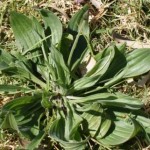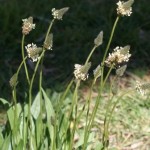
I was so proud of myself the other day to recognise (growing wild) near our river Plantago lanceolata (narrow-leaved plantain / Ribwort). I’ve never been able to confidently recognise anything other than dandelion before! But every time I saw this plant something inside said “That’s plantain”.
I’ve seen this plant ever since I was a child and it was one of my favourite ‘weeds’. I loved the little dancing flower heads, and the beautiful, veined leaves were so elegant to me. How could anything so pretty be considered a weed?
I was speaking with a young girl of aboriginal heritage the other day who told me “My dad always said if there is something in the bush that can hurt you, there is always a plant nearby that can help you”. Not long after, I read a story proving this to be true, about a woman bitten by a brown snake while weeding her garden of plantain. Little did she know the plantain leaves all around her placed on the bite would have helped draw the poison of the snake!

When people say to me “Ew you don’t EAT weeds do you” I often wonder whether they realise how often they themselves do? For example, psyllium husks are dried plantain seeds!
Plantain can be used as a tincture, tea or poultice. If you’re in the garden and are stung by a bee, or get sunburn, or cut yourself, grab a plantain leaf, chew it and put it on the sting, burn or cut for immediate relief (bleeding stops immediately when put on a cut).
This last point got me thinking – why has plantain always been one of my favourites? I believe your body can tell you what you need. I suffer terribly every month with profuse menstrual bleeding for the first day or two of my flow. If plantain can stop bleeding from cuts … what about stemming the flow of menstrual flooding? After some research, yes plantain is well known as an herbal remedy for both external and internal bleeding. The suggested remedy I found was a handful of leaves in a pot of hot water, left to stand for at least 30 minutes and drink 3-4 cups.
I’m off to harvest some plantain to test it out!
Other Uses:
Plantain leaves can be used chopped into salads, used in stir fry or cooked like spinach. Mashed up and warmed they can be used in poultices to draw out splinters and thorns. The juice from the leaves can be used to make a cough syrup, or added to orange juice or other fruit juice for a dose of chlorophyll! An infusion made from the leaves can help settle diarrhoea.
Nutritional Components:
Mucilage, tannin and silicic acid, calcium, vitamin C and potassium.
Find out more about this amazing plant in this article by Susun Weed.
Another great reference: Global Herbal Supplies
